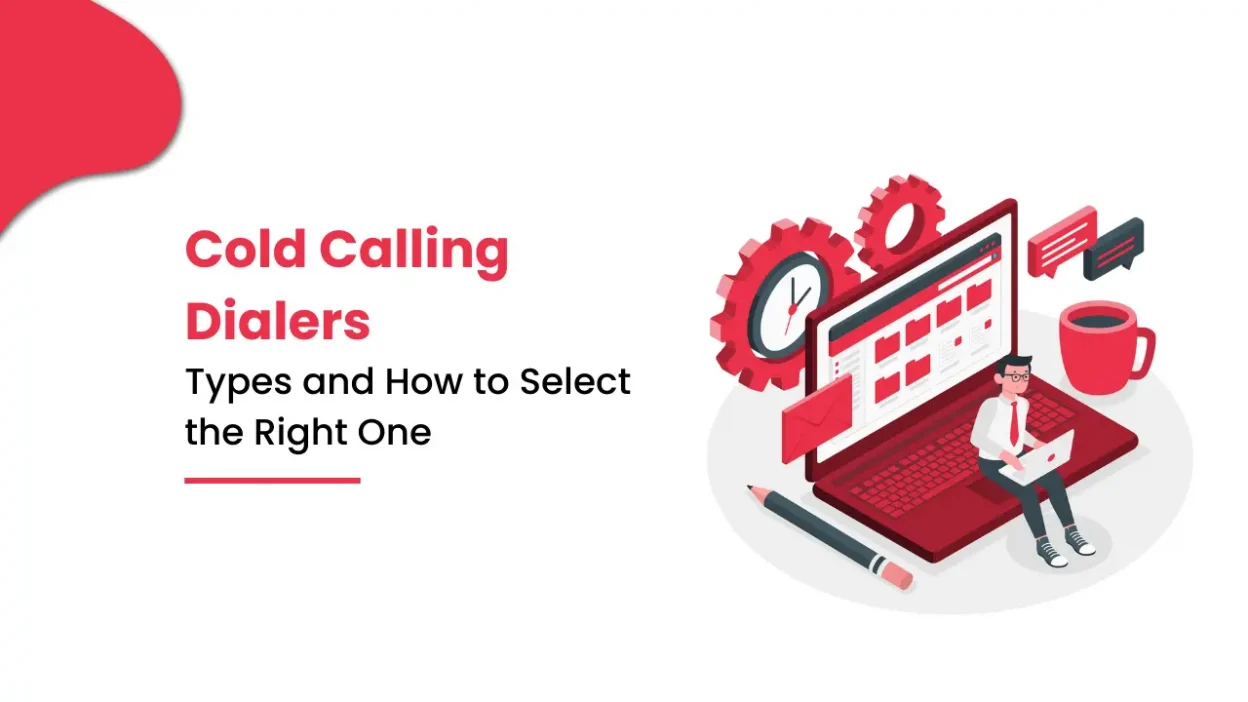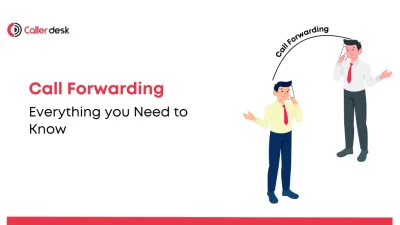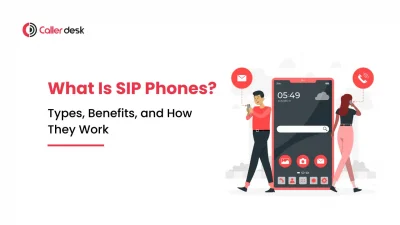Do you struggle to keep your call center agents busy and your relationships successful?
Cold calling dialers might be the solution you need. These dialers automate the dialing process, enhance productivity, and increase the chances of successful connections.
Selecting the right cold calling dialer is essential for streamlining business operations and allowing your agents to focus on meaningful customer interactions. Understanding the different types of cold calling dialers and choosing the right one can significantly enhance your business performance and drive growth.
Types of Cold Calling Dialers
1. Preview Dialers
Preview dialers allow agents to review contact information before making a call. This type is ideal for complex sales processes where personalization and preparation are crucial. By letting agents see customer details before calling, they can tailor their approach, making conversations more relevant and increasing the chances of success.
When to Use: Preview dialers are best for situations where each call requires a personalized approach, such as high-value sales or customer service scenarios where understanding customer history is crucial.
Advantages: Provides agents with the information needed to personalize calls, increasing the likelihood of successful outcomes.
Disadvantages: Can be slower than other dialers because agents spend time reviewing information before each call.
2. Progressive Dialers
Progressive dialers automatically dial the next number in the queue only when an agent is available. This ensures that agents spend more time talking and less time waiting. For call centers with high volumes of calls, this can dramatically increase productivity by keeping agents consistently engaged.
When to Use: Ideal for call centers with moderate to high call volumes where agents need to stay engaged with minimal downtime.
Advantages: Reduces idle time between calls, ensuring agents are continually productive.
Disadvantages: May not be as fast as predictive dialers, but it balances efficiency and call quality better.
3. Predictive Dialers
Predictive dialers use powerful algorithms to forecast agent availability and dial numerous numbers at once. They maximize talk time by connecting agents to live calls as soon as they become available. While highly efficient, they require careful management to avoid high call abandonment rates.
When to Use: Suitable for large outbound sales teams or telemarketing campaigns where maximizing call volume is crucial.
Advantages: Maximizes agent talk time, leading to higher call volumes and potentially more sales.
Disadvantages: Risk of high call abandonment rates if not managed correctly, which can frustrate potential customers.
4. Power Dialers
Power dialers automatically dial a list of numbers but only connect the call to an agent once a live person answers. This type is beneficial for small to medium-sized call centers where agents need to maximize their time talking to real prospects rather than dealing with voicemails or unanswered calls.
When to Use: Best for small to medium-sized businesses with moderate call volumes, focusing on quality interactions over quantity.
Advantages: Ensures agents spend their time talking to live prospects, improving the quality of interactions.
Disadvantages: Slower than predictive dialers as it doesn’t dial multiple numbers simultaneously.
How to Select the Right Cold Calling Dialer
Choosing the right cold calling dialer depends on several factors, including your business size, goals, and specific needs. Here’s a step-by-step approach that will help you make the proper decision:
1. Identify Your Needs
Determine what your call center or business needs. Consider factors such as call volume, agent availability, and the complexity of your sales process. Understanding your specific requirements will help narrow down the options and ensure the dialer you choose fits your operational needs.
Questions to Ask:
- What is the volume of calls we handle daily?
- Do our agents need time to prepare before each call?
- What is the main goal of our calls (e.g., sales, customer service, lead generation)?
2. Evaluate Features
Compare the features of different dialers. Look for essential functionalities like call recording, CRM integration, real-time reporting, and compliance features. Ensure the dialer offers everything you need to streamline your operations and enhance productivity.
Key Features to Consider:
- Call Recording: Important for training and quality assurance.
- CRM Integration: Helps keep track of customer interactions and history.
- Real-Time Reporting: Real-time reporting enables you to track performance and make data-driven decisions.
- Compliance Features: Ensures adherence to regulations like TCPA and GDPR.
3. Consider Scalability
Make sure the dialer can scale with your company’s expansion. A scalable solution will save you the hassle of switching systems as your call volume increases. Check if the dialer can handle an increasing number of agents and calls without compromising performance.
Factors to Consider:
- Can the dialer accommodate more agents as we grow?
- Is there a limit to the amount of calls it can process simultaneously?
- How easy is it to upgrade the system?
4. Analyze Cost-Effectiveness
Balance the cost with the features offered. The lowest option may not necessarily be the best. Look for a dialer that provides the best value for money, ensuring you get the necessary features without overspending.
Considerations:
- What is the total cost of ownership, including setup fees, monthly charges, and any additional costs for extra features?
- Is there a trial period or money-back guarantee to test the system before committing?
5. Check Compliance
Ensure the dialer complies with relevant regulations, such as TCPA (Telephone Consumer Protection Act) and GDPR (General Data Protection Regulation). Compliance is crucial to avoid legal issues and ensure your business operates ethically.
Compliance Questions:
- Does the dialer have tools that aid in compliance management, such as do-not-call lists and automated consent recording?
- How does the provider stay updated with regulatory changes?
6. Read Reviews and Get Recommendations
Read user reviews and ask for recommendations from other businesses in your field. This can provide valuable insights into the performance and reliability of the dialer. Look for feedback on customer support, ease of use, and overall satisfaction.
Sources to Check:
- Online review websites, industry forums, and professional networks.
- Reach out to peers in your industry for their experiences and recommendations.
Conclusion
Selecting the right cold calling dialer can transform your call center’s efficiency and productivity. By understanding the different types of dialers—preview, progressive, predictive, and power dialers—and evaluating your specific needs, you can make an informed decision that will benefit your business in the long run.


